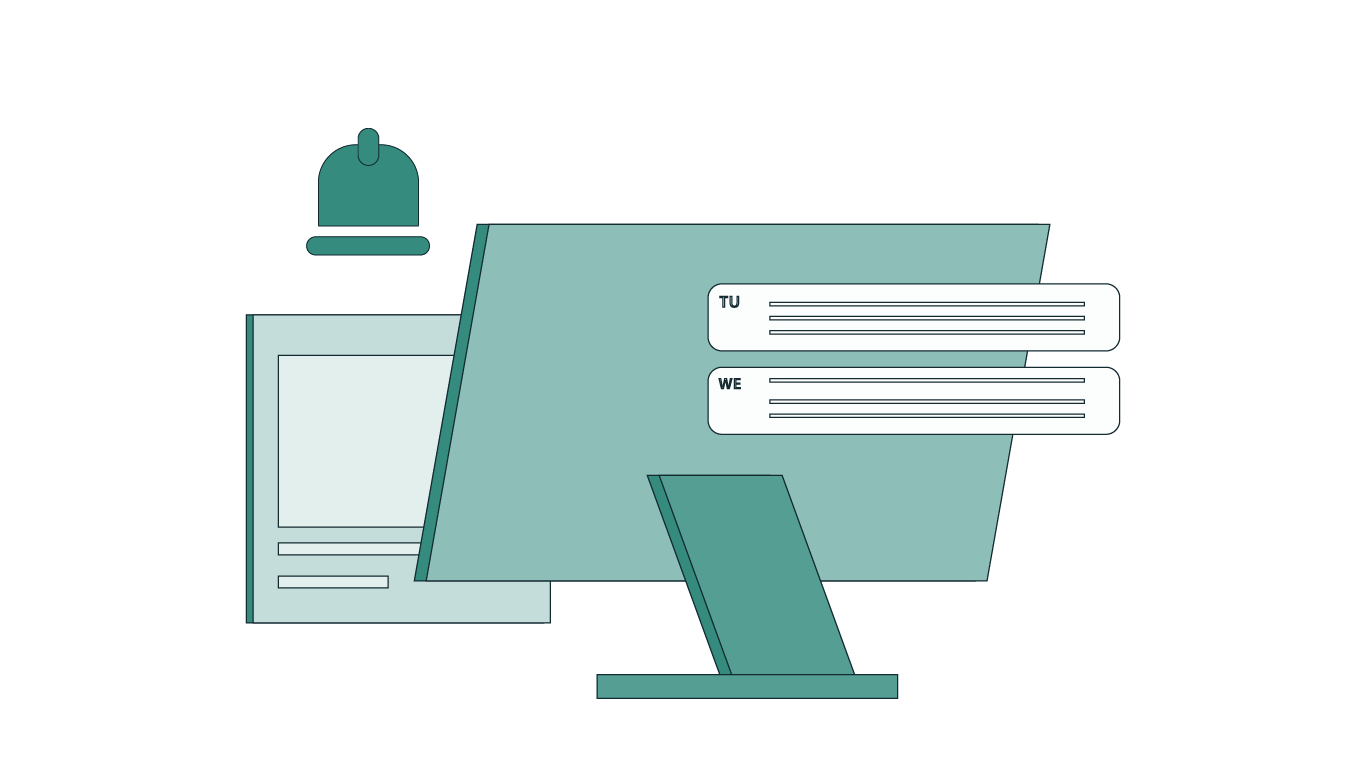Writing for the Harvard Business Review, Dennis Carey, Ram Charan and Bill McNabb highlighted the changing role of the investor relations officer (IRO) and insisted that “CEOs must empower the IRO to be a proactive leader, building constructive relationships throughout the shareholder base to help the company mitigate various risks.” Not only should IROs interact with current investors, but they must also act as a cheerleader to promote the company to new shareholders.
The importance of investor outreach cannot be underestimated at a time when there is demand for issuers to show transparency in areas such as their sustainability efforts. And to communicate effectively with potential shareholders, companies need to implement an investor outreach strategy.
This article discusses the importance of outreach, the key components of interacting with targeted investors and an actionable step-by-step guide to creating an effective strategy for opening communications with new shareholders.
|
Table of Contents
|
The importance of investor outreach today
Effective investor outreach provides a range of benefits for issuers. They include:
Enhanced credibility
The transparency provided by outreach from issuers builds a bond of trust between the organisation and target investors. When the company is open with information and allows interaction with shareholders, it shows that there is nothing to hide and that the business values keeping investors up-to-date. This improves the issuer’s reputation in the market, too.
Better stock liquidity
One benefit of this improved reputation is that it can encourage investors to buy stock in the company, as a transparent and open issuer can seem less of a risky investment in the eyes of some shareholders. In turn, this increased trading volume provides liquidity for shareholders.
Informed decision-making
Enhanced outreach allows shareholders to understand more about the financial instruments available on the market, helping them make better decisions for their investment strategy. It also improves communication in the opposite direction. At the same time, receiving feedback and listening to investor concerns allows the issuer to formulate a strategy more effectively.

How to create an investor outreach strategy
Understand the business and its place in the market
Your communication will focus on helping people understand why they should invest in your business. This means that you need to do a deep dive into your company and understand the reasons that investors should choose your business. What are your unique selling points? What evidence is there that it will prove to be a profitable investment?
And this also means understanding where it stands in the market, compared with your peers. What are the key elements to highlight that prove beyond doubt that an investor should choose you over your competitors? These are the questions you need to ask before you make any more progress on your outreach strategy.
Define your ideal investor profile
To understand who you need to target, you must be aware of your current shareholding. Thanks to the Shareholder Rights Directive (SRD II), issuers can request details of the identities of investors, including the beneficial owners. Using Shareholder Analysis from Euronext Corporate Services, you can dive deeper to identify your shareholding, understand their investment styles and benchmark your shareholding against the industry.
This helps you work out where the gaps are in your shareholding, helping you pinpoint who you need to target. You can see who is invested in similar companies, allowing you to reach out to them and encourage them to invest in your company, too.
Defining who your ideal investor is makes the process of outreach more efficient and provides the company with the breadth it needs in its shareholding.
Craft a compelling story
Your equity story is your chance to enthral your potential investors and make the prospect of investing seem unmissable. To entice new investors, concentrate on structuring your story in a compelling manner.
Start with the background of the business, including the reasons for its existence and the mission that drives it forwards. Then add in the significant milestones and achievements of the business and its financial and operational track record.
Detail the market and the issuer’s place within it, as well as displaying an understanding of trends and how the company will leverage them to succeed. In addition, share your strategy for the future to tell potential investors how their money will help the company reach its goals.
Utilise multi-channel approaches
Communication has never been easier than in the modern age and there is a wide range of media on which to engage with investors. This provides an opportunity for IROs to cast the net wide to interact with their targets.
Once you know your target investors, you can pick the approaches that best chime with those shareholders. Younger investors may be more likely to interact online, through social media and similar channels, for example. For more traditional investors, they might still prefer networking events and face-to-face contact.
Organising hybrid and virtual investor meetings, where some attendees are at the physical location of the event and others are interacting online, helps shareholders choose the approach that they prefer.
Tailor your presentation and pitch decks to the type of investors you are addressing. Your outreach should speak to the people you are targeting and make a direct connection with them.
Build long-term relationships
IROs must nurture their relationships with potential investors. The outreach is important, but the follow-up is similarly necessary to turn interested parties into shareholders. Sometimes it does not happen straight away, but if they are within your target demographic and have shown an interest, it is worth keeping in contact.
Implement an IR CRM to ensure you always follow up with those who you have reached out to. Keep them updated on your progress and sound them out as to their investment intentions.
Ask for feedback from all interested parties, even if they do not invest. Their insights can help you improve your approach in the future. Finally, stay active in the community, attending industry events and networking with your target investors.

Anticipate and address concerns
Use your communications to address the concerns that you feel your targets may have. Another benefit of strong outreach for IROs is that you can reassure floating potential investors before their concerns scare them off.
The feedback you receive from your targets who don’t invest will help you understand the thought processes that might dissuade shareholders, allowing you to create a campaign that reassures others.
Measure and refine
It is important to continually improve your outreach process. Set key performance indicators (KPIs) to monitor the success of your strategy and make sure you regularly review the results.
If it does not seem to be working, analyse your interactions and try to pinpoint where your investor outreach process falls short. Make adjustments and fine-tune your approach, based on the successes that you have, to make the progress that you need in the future.
Key components of investor outreach
| Component | Explanation |
| Investor presentations | Regularly scheduled presentations that provide updates on financial results, market trends and company performance. These provide an opportunity to state your case to your target investors. |
| Roadshows | Organised virtual, hybrid or in-person events where company executives meet with prospective investors. This gives shareholders the chance to hear directly from leadership. |
| One-on-one meetings | Personalised sessions between company representatives and priority investors to discuss specific concerns or opportunities. |
| Digital communication | Utilising online platforms, webinars and social media to disseminate information and engage with various types of investors. For younger investors and retail investors, this is a popular method of outreach. |
FAQ
How often should a company engage in investor outreach?
Investor outreach is a continual process across a range of media. From updating your IR website to posting on social media sites such as LinkedIn and arranging investor events. IROs will plot activity all year round to target those investors they believe are the best for the organisation.
How do we integrate ESG (environmental, social, and governance) factors into our investor outreach?
ESG has become a focal point for many investors. You can integrate ESG by showcasing initiatives, policies, and results in these areas. Highlighting sustainable practices and responsible governance can appeal to socially-conscious investors.
How can we handle negative feedback or scepticism from potential investors during outreach?
Address concerns head-on with factual data and a clear action plan in your investor update. Demonstrating a willingness to listen and adjust based on feedback can build trust and credibility, even in the face of scepticism.
In the case of a company crisis or PR issue, how should we adjust our outreach strategy?
Transparency is key. Address the issue directly, communicate the steps taken to rectify it, and outline future preventative measures. Crisis management and maintaining investor trust should be the top priorities.
ConclusionAn effective investor outreach strategy is essential for helping you gain investment from those shareholders who will bring your business the value it requires. It involves understanding who you want to talk to and how best to engage with prospective investors. To help in this process, IR.Manager from Euronext Corporate Services is an investor CRM that enables your IR team to streamline its workflow in terms of investor identification and engagement. Request a demo of IR.Manager now to find out how it can enhance your investor outreach efforts. |
References and further reading
Related articles
-
ESG Fund Names: What ESMA’s New Guidelines Mean For Issuers
Read the article -
New Governance solutions with AGM Voting Insight and ESG Data distribution
Read the article -
CSRD Reporting Requirements: A Comprehensive Guide
Read the article
Share this post



